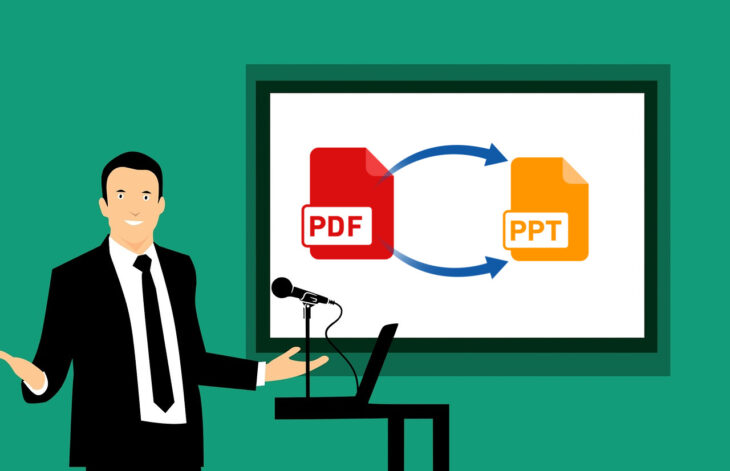Longitude and latitude are essential coordinates in pinpointing specific locations on Earth’s surface, providing accurate and uniform methods of pinpointing any spot on the globe, aiding mapping, navigation, scientific study and practical applications such as mapping. Here we explore both longitude and latitude as concepts over time as well as their modern-day applications and significance in today’s society.
Historical Origins
Longitude and latitude have an extensive and fascinating history dating back millennia. Since the earliest civilizations such as those found among Egyptians, Greeks, and Chinese understood its importance for understanding Earth’s form by creating methods to determine locations on its surface, this concept of longitude and latitude was quickly put in practice by all three cultures.
Latitude
(the distance north or south an area can be from the Equator) derives its name from Latin ”latus,” which translates as “side.” Latitude has its origins among ancient Greek mathematicians and astronomers like Hipparchus who established its calculation method by measuring angles that exist between an area’s location within its sky and Polaris’ North Star; increasing as one travels north while decreasing with travel southward.
This measurement known as altitude North Star increases when traveling towards Polaris while diminishing as one moves south along this line of journeying along with altitude North Star which also increases as one moves further from this central place of measurement of distance in relation to Polaris itself – increasing with travel northward and decreasing when moving southward.
Eratosthenes was widely acknowledged for being among the first individuals to accurately calculate Earth’s circumference by measuring angles of solar radiation at two separate places on its surface and using this knowledge to establish distance measurements that later enabled him to establish Earth’s circumference as an entity. Eratosthenes’ work set the groundwork for latitude measurements as an effective way of tracking positions on Earth’s surface from north and south latitudes.
Also Read: Boost Your Instagram Experience with the Instagram Download Reels App: Unleash the Power!
Longitude,
which measures the distance to or from its Prime Meridian, has had an intricate past due to difficulties associated with accurately measuring it. Even early civilizations were aware of Longitude; however, accurately calculating it presented quite an uphill climb.
Longitude measurements date back to the Age of Exploration when sailors set sail across vast distances to search for new land as well as trade routes. Accurate measurements made navigation difficult - ships would often veer off course and become lost. This progressed over time until modern measurements became accurate enough that precise longitude readings became essential.
Longitude measurements made significant strides forward following England’s Longitude Act of 1714. Under this act, any individual or team who could develop an effective and precise means for calculating longitude at sea was eligible to win a cash reward; eventually, John Harrison (an English clockmaker with self-taught training in marine chronometry), solved this challenge by creating the marine chronometer - an accurate timekeeping device which enabled sailors to compare local time with Greenwich Mean Time to accurately pinpoint longitude measurements.
Harrison’s marine chronometer marked an essential development in navigation history and greatly reduced danger associated with long sea journeys. Additionally, this device laid down the foundation for modern longitude measurement which accurately pinpoints east and west positions on Earth’s surface.
Latitude (also referred to as parallels) lines can be imagined as circles that run horizontally around Earth. The Equator, the imaginary line running from zero latitude south to north — divides our globe equally and also serves as an imaginary dividing line — while lines of latitude extend horizontally from an imagined line on Earth’s equator into equal halves called The Northern Hemisphere and Southern Hemisphere respectively. Measured as degrees on the Equator they range between zero degrees N near the North Pole up to 90deg N near the North Pole/90deg S/South Pole/
1. Equator
The Equator is the iconic line of latitude that marks midway across both poles of Earth. As its location on zero degrees represents all other latitudes that exist along its route, it represents its significance as the basis for other latitudes to follow.
2. Tropics of Cancer and Capricorn
The Tropic of Cancer and the Tropic of Capricorn are two key lines that delineate tropical regions. According to research, both of them lie approximately at 23.5deg N and South respectively and mark where direct sunlight appears at Solstices during Summer (Tropic of Cancer) or Winter solstice (Tropic of Capricorn). These locations play a pivotal role when discussing tropical regions as these two lines mark out where tropical regions begin/end respectively.
3. Polar Circles
The Arctic and Antarctic Circles can be found approximately 66.5 degrees N and S respectively and act as border lines when certain seasons experience periods where no sunrise (winter) or set (summer) for extended periods – respectively known as these “polar seasons”. Beyond either circle are zones designated to these polar regions.
4. Latitude and Climate
Latitude plays an integral part in shaping an area’s climate. In general, lower latitude regions (closer to Equator) typically experience warmer temperatures with regular length of day during most years – leading to subtropical and tropical climates; areas further from north/south poles (higher latitudes) often experience colder temps with wide variance in length of day resulting in subpolar or even polar climates.
5. Latitude and Navigation
Latitude plays an integral part in navigation as it helps determine where a plane or ship stands relative to the Equator. Pilots and sailors rely heavily upon latitude and longitude data in determining their precise locations on Earth; navigational devices like sextants and GPS systems depend upon this coordinate data for accurate direction of travelers.
Longitude or meridians, are imaginary half-circles extending horizontally from the North Pole to South Pole and vice versa. Latitude has its reference point on Earth at its Equator; by comparison, there is no natural point for longitude that we can use as a starting location; because this was such an international problem the Prime Meridian from Greenwich England serves as this starting location with zero degree longitude as starting point for measuring east-west locations.
Distance is measured in degrees, beginning with zero along the Prime Meridian to 180 degrees E (east) and 180 degrees W (west), meeting on the International Date Line. Longitude lines east of Prime Meridian are expressed with positive numbers while those west are expressed using negative ones.
Also Read: Entrepreneur: What It Means to Be One and How to Get Started
Key Concepts Regarding Longitude (Latitude/Longitude)
1. Prime Meridian
Greenwich, England’s Prime Meridian serves as the starting point for measuring all other longitudes on Earth, as its division into Eastern and Western Hemispheres defines it. From there on out, longitude is measured westward or eastward from it with values between 0deg to 180deg being recorded as its position on a globe map.
2. International Date Line
The International Date Line is an imaginary line that roughly follows 180deg longitude; however, its path deviates slightly to avoid certain islands and land masses. Crossing it will result in alteration to your date; moving west along this line subtracts one day while going east adds one.
3. Time Zones
Time and longitude are intertwined; moving east away from the Prime Meridian causes local time to advance by one hour for every 15-degree change of length, while westward movement results in subtracting one hour per 15deg of longitude change – establishing global time zones in this way.
4. Longitude and Navigation
Longitude is key for navigation as it establishes where one stands on Earth’s east-west orientation. Pilots and mariners rely heavily on it when pinpointing their exact locations on earth; mariners use latitude instead. Reliable methods for timing at sea - like John Harrison’s marine chronometer – revolutionized navigation, making long-distance ocean cruises both safer and more secure.
5. Longitude and Timekeeping
Longitude has had an important role in shaping precise timekeeping devices like chronometers. Before their invention, ships’ horizon length was often estimated using local time relative to reference points such as Prime Meridian time; as this led to improvements in horology (the study of timekeeping), this eventually lead to extremely precise timekeepers such as chronometers being developed.
Utilizing Latitude and Longitude Latitude and longitude are indispensable tools in today’s globalized environment, serving multiple functions across several major fields. Here are just a few key areas in which they may come in handy:
1. Navigation
For air, sea and land travel alike, navigation requires accurate coordinates that provide users with accurate locational information about all their global users. GPSS technology uses these coordinates to deliver this vital data around the globe allowing people to easily design routes with pinpoint precision while reaching places accurately. This technology has transformed logistics and travel allowing travelers to achieve precision when reaching destinations more accurately than ever.
Cartographers utilize latitude and longitude coordinates to produce accurate maps of the Earth’s surface. They serve as grid coordinates which mapmakers use to depict geographical features like cities, countries mountains rivers and cities in an even and standard fashion.
3. Emergency Services
In America, such as 911 services in America rely heavily on latitude and longitude coordinates for quick emergency responses as well as to identify those needing help in an instantaneous way. Using their coordinates of location people can get immediate help from firefighters, police, as well as medical personnel quickly.
4. Geographic Information Systems (GIS)
GIS technology uses latitude and longitude data to interpret spatial data, providing invaluable support in urban planning as well as agricultural management, environmental monitoring and emergency response efforts. GIS helps professionals make educated decisions based on geographic details.
5. Scientific Research Scientists utilize latitude and longitude coordinates in scientific research projects in order to monitor climate patterns as well as climate migration of wildlife species, seismic activity and ocean currents, among many others. With these coordinates they gather and interpret data that allows researchers to gain a more in depth knowledge of our planet’s natural processes.
6. Geocaching as Recreation
Geocaching, an outdoor practice using GPS coordinates to find hidden containers known as geocaches, is an activity in which players use specialized devices or apps on smartphones to find specific coordinates to locate troves. Longitude and latitude play an essential part in this game of ”geocaching.”
Latitude and Longitude Have Limits Although latitudes and longitudes provide a powerful method for pinpointing locations, there can be challenges and constraints involved with using latitude/longitude coordinates for identification purposes. These issues include limited storage capacities on digital maps as well as potential challenges from weather.
1. Map Distortions mes Flat maps that depict Earth’s curving surface often display distortions as one moves further from Equator, potentially impacting measurements as well as distance calculations. Various projections for maps exist to meet individual requirements for accuracy in measurement or distance calculations.
2. Complex Coordinate Systems
In some instances, more precise representation of smaller regions requires using complex coordinate systems like UTM (Universal Transverse Merator) or MGRS (Military Grid Reference System) when mapping regional or local spaces. These alternative coordinate systems such as UTM can help map regional maps more precisely than their counterparts such as Google Earth do.
3. Accuracy
Latitude and longitude measurements can typically be calculated in either minutes, degrees and seconds (DMS) or decimal degrees (DD). Your choice may affect both its accuracy and precision – with DMS providing greater detail while taking up more calculation space and space in general.
Longitude lines converge near the poles, meaning distances between lines shrink as one moves closer. This could make distance measurements in high latitude regions more complicated and cumbersome to conduct accurately.
Local Variations
At times, local variations in Earth’s form and gravitational field may produce subtle shifts that affect latitude/longitude coordinates as calculated with idealized perfect sphere or ellipsoid models. Such local fluctuations could account for small deviations between observed latitude/longitude coordinates as observed and calculated sphere/ellipsoid models based on theoretical calculations of observed latitude/longitude data and observed data that is taken directly from satellite.
Conclusion
Latitude and longitude coordinates provide us with crucial geolocated coordinates that allow us to map, navigate and understand our world more precisely. They date back centuries in Ancient Civilizations while having current applications across mapping, navigation as well as numerous practical and scientific areas - these coordinates remain an indispensable aspect of life even as technology increases precision and efficiency; their prominence only increasing with technological development in an ever-evolving global society.





















You must be logged in to post a comment.